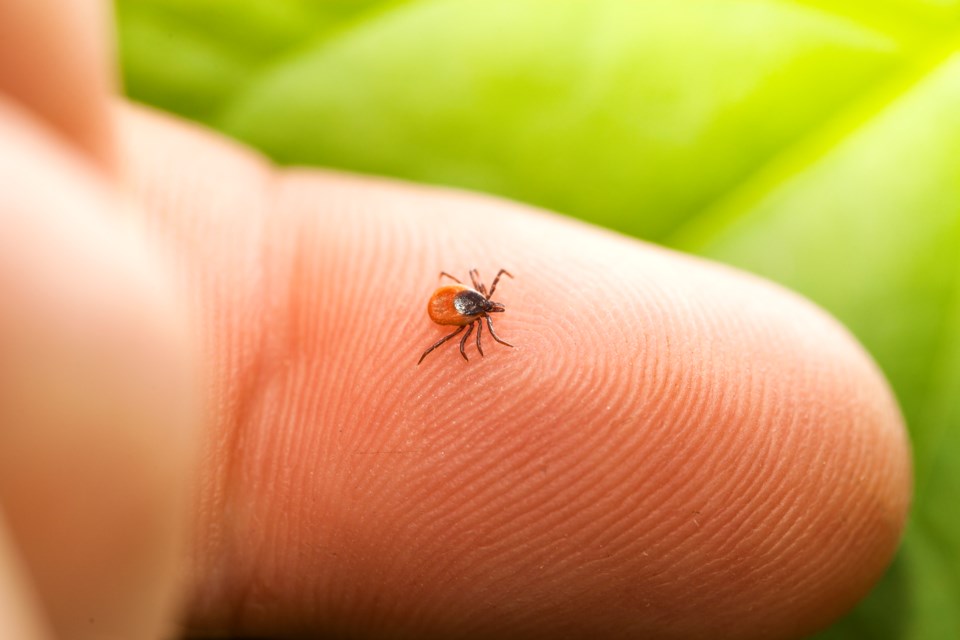The Saskatchewan Ministry of Health recently released an advisory asking residents to be vigilant when it comes to the blood-sucking insect — especially the Lyme disease-causing blacklegged tick — when it comes to both on their person and their pets.
Blacklegged ticks are relatively rare in the province and are introduced by migratory birds in the spring. They mature into adults through the summer and remain active in tall grass, brush and wooded areas — in other words, the exact type of terrain found in Wakamow Valley and parks throughout the city.
Fortunately, there’s a way to keep an eye on things.
The province, along with researchers from the University of Saskatchewan, launched the eTick app this spring, a program designed to identify the insects through photos submitted by users. Simply download the program at www.etick.ca, submit photos taken of ticks on humans and animals using the system and information will be returned quickly with regards to they type of tick along with the risk of tick-borne diseases.
“Data received through the eTick platform will allow us to monitor the distribution and level of establishment of ticks, specifically blacklegged tick populations, and assist in monitoring the risk of Lyme disease across the province,” said Dr. Denise Werker, consulting medical health officer. “While the risk of Lyme disease is low in Saskatchewan, it is still important for people to take precautions against ticks.”
Those precautions include:
- Wear pants, long-sleeved shirts and shoes that don’t expose your feet.
- Pull socks over your pant legs to prevent ticks from crawling up your legs.
- Wear light-coloured clothes so ticks can be seen easily.
- Use insect repellents that contain DEET or Icaridin. Apply repellent to clothes as well as your skin. Always read and follow the directions.
- In Canada, clothing that has been treated with the insecticide permethrin has been approved for use by people over the age of 16.
- Shower or bathe as soon as possible after being outside to wash off loose ticks and inspect for attached ticks.
- Do “full body” tick checks after being outside on yourself, your children and your pets.
If you find a tick attached to your skin or on your pet:
- Carefully remove it with fine-tipped tweezers and grasp the mouth parts of the tick as close to the skin as possible.
- Pull slowly upward and out with a firm steady pressure.
- Be careful not to squeeze, crush or puncture the body after removal as this may also contain infectious fluids.
- Do not put Vaseline, gasoline, or other noxious substances on an attached tick which may cause it to regurgitate.
- Submit photos of your tick using the eTick system and hang onto your tick in case we request it for further testing. Ticks can be euthanized by placing it in a bag and storing it in the freezer for 24 hours.
- In Saskatchewan, any ticks found in the fall are likely to be ticks of interest, such as the blacklegged tick.
Fortunately, most ticks found in Saskatchewan aren’t of the blacklegged variety. The American dog tick is most prevalent and is active from mid-April to the end of July and cannot spread Lyme Disease.
A total of 3,022 ticks have been submitted to the provincial health authority since April, with only 11 identified as blacklegged ticks. Six of those were tested, and three were positive for the bacteria that cause Lyme Disease.
For more information on ticks and Lyme disease, including how to submit a tick for Lyme disease testing, visit www.saskatchewan.ca/lyme or https://research-groups.usask.ca/ticks/#Passivesurveillance.




